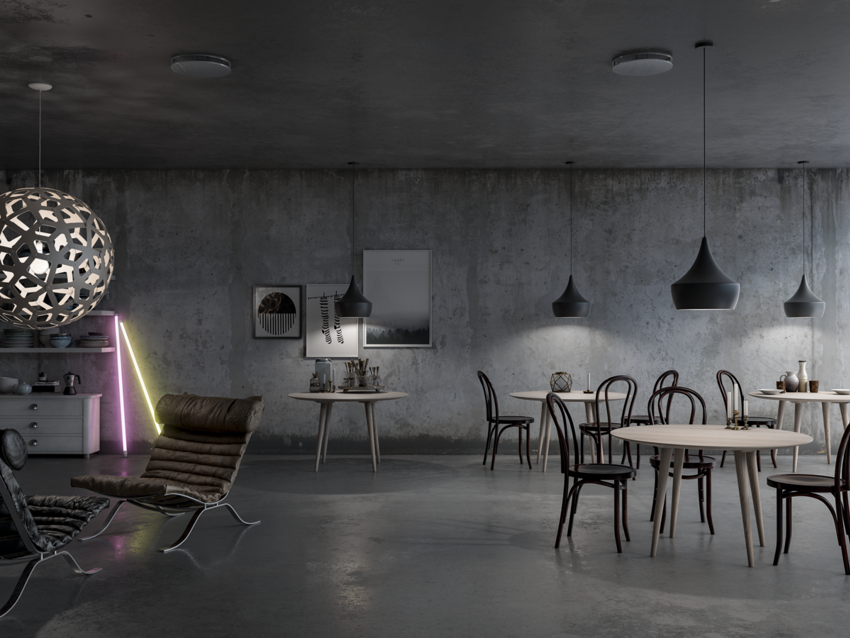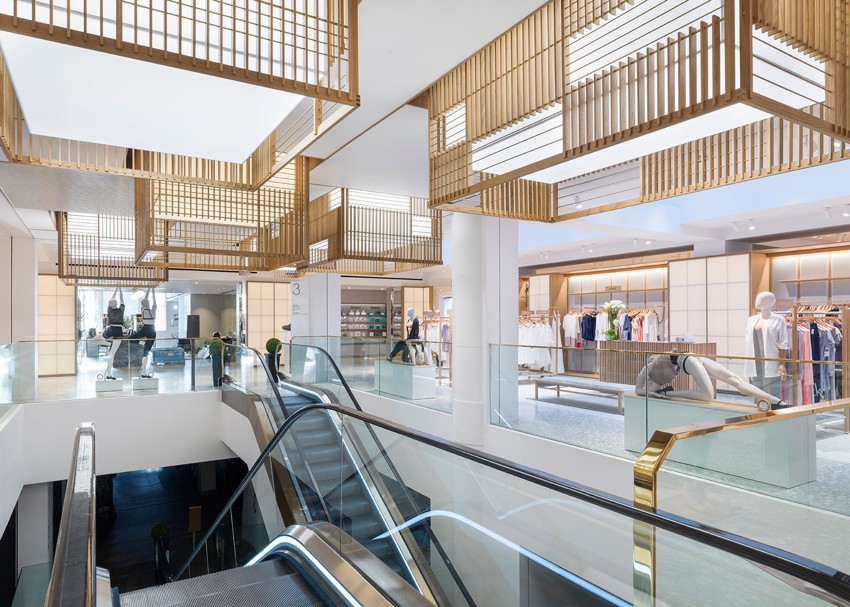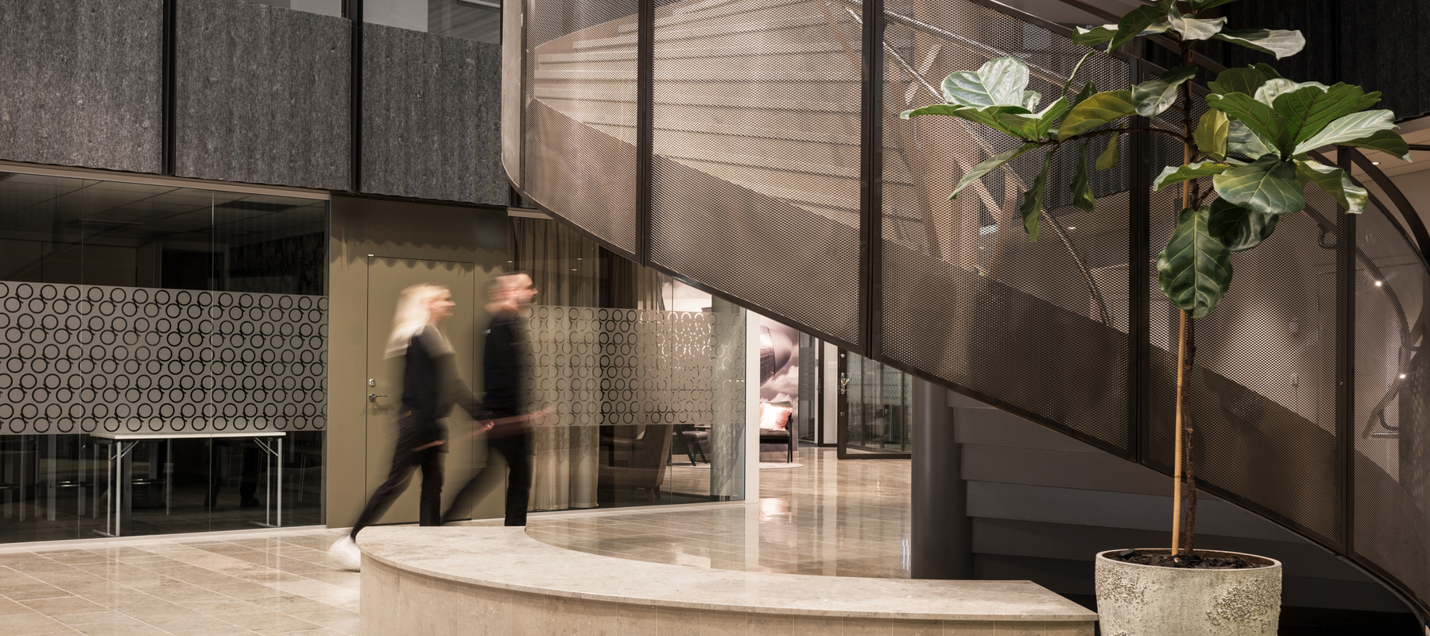Indoor climate
A retail store is not necessarily different from an office or a hotel, people come and go between opening and closing times, peak hours are usually predictable and the activities inside rarely vary. While customers may not spend as much time in a store as they would in an office or hotel, store employees spend their entire workday there. Their comfort, well-being and ability to perform at their best should be supported by a good indoor climate.
Similar to the fact that employees can do a better job when they’re comfortable, customers are more likely to make satisfying shopping decisions in a store where they feel good inside. In sum, a good indoor climate will enhance the overall customer experience and support employees throughout their work day.
Learn more about indoor climate in our guide
Sustainability
There may be no clearer expectation for the future of the retail industry than to significantly reduce carbon emissions. The challenge is to achieve this without an increase in the operational costs or need for major investments. To reduce ventilation or allow for higher or lower indoor temperatures, depending on the outdoor climate, may seem like an easy solution—but we think not.
A shopping experience is not just about the products offered, it is shaped by a number of factors that together create an indoor environment that is either attractive or not. Air quality, temperature, humidity, sound and light are a few of the parameters that, when optimally balanced, create a good and energy efficient indoor climate. Let us tell you more.
Visit our guide about energy efficiency
Learn more about sustainability and our RE:3 conceptHow energy and economics go together
The environmental and economic benefits of decarbonising retail stores can be substantial. Much depends on the existing indoor climate solution, the energy supply mix and the energy price. It is not unrealistic to expect a 60% decarbonisation if going from a natural gas boiler to a well-optimised heat pump solution. However, the econmic benefits are in some markets fairly modest as there is a less significant gap in cost between gas and electricity. It is though important to reflect upon the indirect gains in moving from a dated indoor climate solution to one that is modern and forward-thinking.
Our modelling tools allow us to project these savings and explore different scenarios, giving a clear picture of the potential ROI in both environmental and economic terms.
Learn about total equivalent warming impact (TEWI) in our blog post
How to let the invisible be invisible, or visible?
The indoor climate cannot be touched, it is often hard to describe and the positive effects of a good indoor climate are often overlooked. A good indoor climate makes people feel good inside and ensures buildings last for many years. Our Swegon INSIDE services can digitally display the quality of the indoor climate and assist in decision-making regarding energy consumption, service, and maintenance.
However, the indoor climate solution does not have to be on display, it can be nearly invisible and allow the architecture and aesthetics to take center stage. Grilles and diffusers that blend in and create minimalist looks can be selected for nearly any store concept and many products can be custom painted to blend seamlessly with the interior. Alternatively, exposed diffusers and ducts can be chosen to stand out and create an industrial or urban feel, and the custom-colour option can be used to make the indoor climate solution stand out.
Get familiar with our Flowbar

Humidity - how to care for products in a store
There are a few different perspectives when it comes to humidity in retail. Take a grocery store, for example. Too high levels of humidity can quickly ruin freshly baked bread and there is an apparent risk of mould growing on fruits and vegetables. Another issue is the many refrigerators and freezer boxes with glass windows or tops - too much humidity can cause condensation, which negatively impacts the shopping experience. Much of this can be applied to other kinds of stores, and smell may be the most apparent issue caused by too high levels of humidity.
On the other hand, too low levels of humidity can dry out items in the store’s produce section and, more importantly, an overly dry indoor climate can negatively affect employees working in the store.

Optimised humidity levels to care for people and buildings
It is not often anyone discusses the issue of overly dry indoor enviornments, even though it is directly related to problems like dry eyes, arid throats, chapped lips and sensitive skin. To care for a store's employees, it is vital to ensure that humidity level is not too low.
Last but not least, a building construction does not fare well with too high or too low levels of humidity. Just like with the mentioned fruits, vegetables and organic materials, mould can form and other health issues may arise, contributing to Sick Building Syndrome (SBS).
To our guide on Mollier diagrams to learn more about humidity
Read more in our blog section about humitidyLighting and light
Lighting is a crucial factor in a store’s atmosphere. Most stores have now transitioned to LED lighting, which is beneficial in terms of reduced heat load and energy consumption. However, natural daylight is often used to create the right atmosphere but natural light can have a completely different impact on the indoor climate.
Some buildings are constructed with large windows or entire glass facades. The characteristics and orientation of these windows can significantly affect the indoor climate and influence the cooling capacity required. For example, if a building’s windows allow heat to enter, the choice of diffusers and climate modules becomes crucial to ensure that draughts are eliminated while cooling the premises to a comfortable temperature.
Read more
The sound of indoor climate
Sound is yet another factor to consider, although there are no universal recommendations that suit every retail store. Everything depends on the type of building and the desired feel inside the store. A warehouse-like building with high ceilings must minimize the most prominent sounds and also vibrations that can otherwise reverberate throughout the building. A shopping mall may need to address both indoor and outdoor sound requirements to offer a peaceful shopping experience inside while being a respectful (and regulation-compliant) neighbor in a city center.
The most selective choices for sound elimination are made in the luxury retail segment, but well-developed sound attenuators are worth to consider for any shopping environment. This to eliminate the need for sound masking, and instead create in indoor environment where ambient music or tones can enhance the shopping experience. In fact, satisfying shopping decisions are more likely to be made in environments where customers are comfortable and can think clearly.
Read more about sound attenuation in practice

